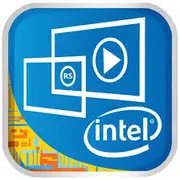Intel Core m5-6Y54

Intel Core m5-6Y54: Obsolete Yet Still Relevant for Ultra-Portability
Processor Analysis for Thin Laptops in the Context of 2025
Architecture and Process Technology: Skylake Efficiency at 14 nm
The Intel Core m5-6Y54 processor, released in 2015, is based on the Skylake microarchitecture and 14 nm process technology. It is a dual-core chip with support for Hyper-Threading (4 threads), a base frequency of 1.1 GHz, and turbo mode up to 2.7 GHz. The integrated Intel HD Graphics 515 (24 EU, 300–900 MHz) provides basic multimedia support.
Architecture Features:
- Energy Efficiency: Skylake optimized power management, crucial for ultrabooks.
- Intel Speed Shift: This technology speeds up the transition between processor states, reducing latency.
- Support for DDR3L/LPDDR3: The maximum RAM capacity is 16 GB, but most devices used 4–8 GB.
Despite its age, this chip can still be found in used or budget thin laptops in 2025. Modern counterparts (e.g., Intel Core Ultra U-series or Apple M3) outperform it in every parameter, but the m5-6Y54 remains a symbol of the era when Intel focused on ultra-low TDP.
TDP 4.5 W: Thermal Design Power for Passive Cooling
The 4.5 W TDP is a key feature of the Core m5-6Y54. This allowed for the creation of fanless laptops, such as the Apple MacBook 12" (2015–2017) or Lenovo Yoga 730.
Pros:
- Silence.
- Minimalist design (case thickness up to 13 mm).
- Low heat output.
Cons:
- Limited performance under load.
- Turbo mode operates temporarily (usually 10-15 seconds), after which frequency decreases due to overheating.
Performance: Modest Results in 2025
According to Geekbench 6 (2025):
- Single-Core: 713
- Multi-Core: 1351
Real Tasks:
- Office Work: Chrome with 10+ tabs, Word, Zoom — occasional stuttering may occur.
- Multimedia: 4K video playback (with hardware acceleration) is possible, but rendering in DaVinci Resolve is unacceptable.
- Gaming: Only older games at low settings (e.g., CS:GO — 20–25 FPS at 720p).
Turbo Boost Mode: Increases frequency up to 2.7 GHz, but due to passive cooling, it is effective only for short tasks (loading web pages, opening applications).
Use Cases: Who is the Core m5-6Y54 Relevant for in 2025?
1. Secondary Laptop: Buying a used device for $150–$250 for travel or as a backup.
2. Basic Tasks: Web browsing, document work, online courses.
3. Linux Enthusiasts: Lightweight distributions (Lubuntu, Xubuntu) can revitalize older machines.
Not Suitable For:
- Modern gaming and video editing.
- Running neural network models (e.g., Stable Diffusion).
Battery Life: Up to 10 Hours in 2025?
Laptops with the Core m5-6Y54 were equipped with 30–40 Wh batteries. By 2025, their capacity could decrease to 60–70%, but with battery replacement, the potential is:
- 8–10 hours at 150 nits brightness while working in Google Docs.
- 5–6 hours while watching YouTube.
Power-saving Technologies:
- C-States: Putting unused cores into sleep mode.
- Panel Self Refresh: Reducing screen power consumption.
Comparison with Competitors: Against Apple and AMD
Intel Core m5-6Y54 (2015):
- TDP: 4.5 W
- Geekbench 6 Single: 713
- Graphics: HD 515
Apple M1 (2020):
- TDP: 10 W
- Geekbench 6 Single: 2300
- Graphics: Apple M1 7-core GPU
AMD Ryzen 3 7320U (2022):
- TDP: 15 W
- Geekbench 6 Single: 1450
- Graphics: Radeon 610M
Conclusions:
- Apple M1 outperforms the m5-6Y54 by 3 times in performance with double the TDP.
- Ryzen 3 7320U (Zen 2) is relevant in budget laptops of 2025 ($400–$500) and offers 4 cores/8 threads.
Pros and Cons: Why to Buy or Not to Buy?
Strengths:
- Ultra-portability.
- Silence.
- Low prices in the second-hand market.
Weaknesses:
- Obsolete performance.
- Limited support for modern OS (e.g., Windows 12 requires at least 4 cores).
- Weak graphics.
Laptop Selection Recommendations for 2025
If you are considering devices with the Core m5-6Y54:
1. Type of Device: Ultrabook with SSD (minimum 256 GB) and 8 GB RAM.
2. Screen: IPS panel with a resolution of 1920×1080.
3. Price: No more than $250 for a used device in good condition.
Advice: It may be better to add $100–200 and choose a laptop with Ryzen 3 7320U or Intel Core i3-N305 — they will support modern applications and last longer.
Final Conclusion: Who is this Processor For?
The Core m5-6Y54 in 2025 is suitable for:
- Minimalists who need a cheap, lightweight laptop for text and internet use.
- Travelers willing to cope with limitations for the sake of compactness.
- Enthusiasts repurposing old devices for Linux projects.
Key Benefit: A balance of price and portability. However, for most users, modern budget chips from Intel, AMD, or Apple will be a more sensible investment.
Basic
CPU Specifications
Memory Specifications
GPU Specifications
Miscellaneous
Benchmarks
Compared to Other CPU
Share in social media
Or Link To Us
<a href="https://cputronic.com/en/cpu/intel-core-m5-6y54" target="_blank">Intel Core m5-6Y54</a>